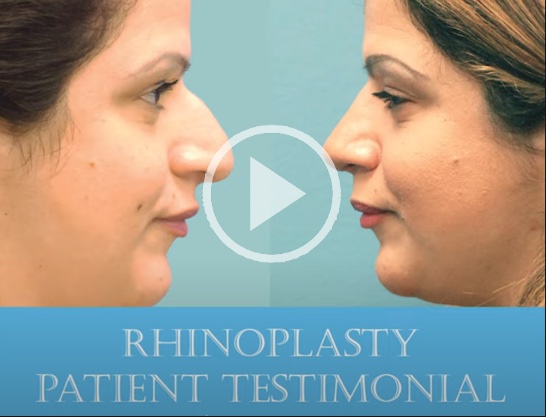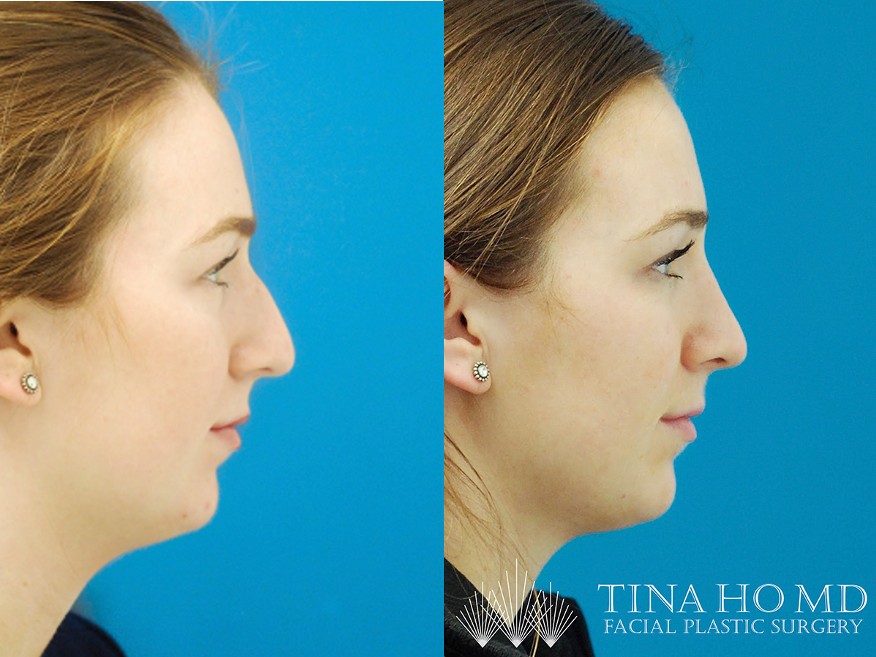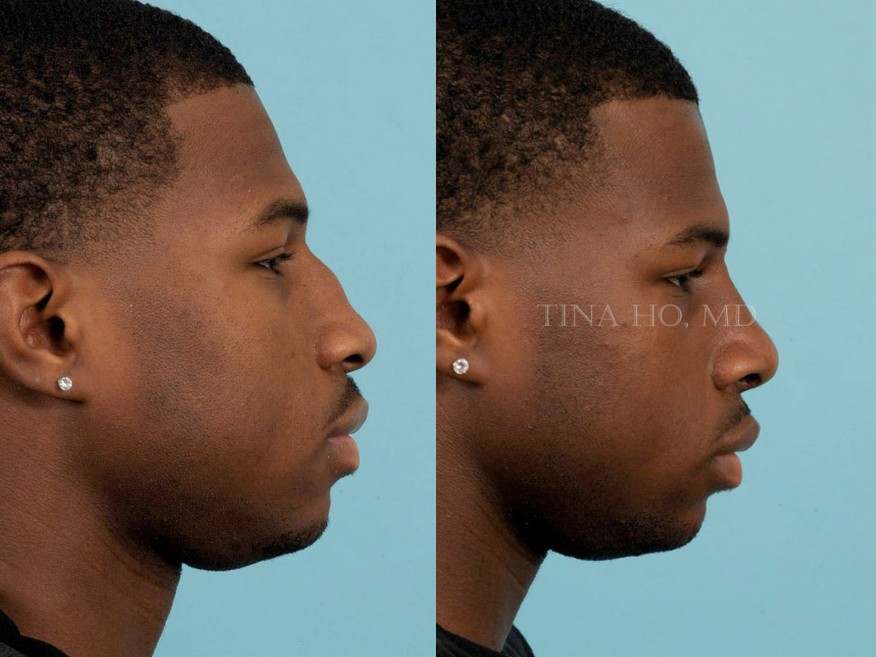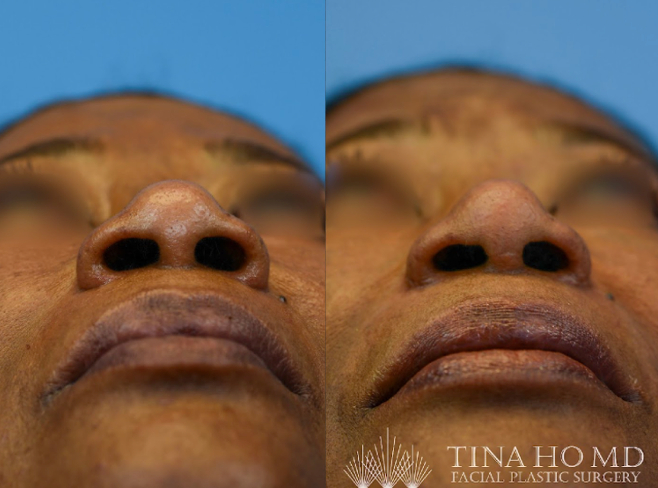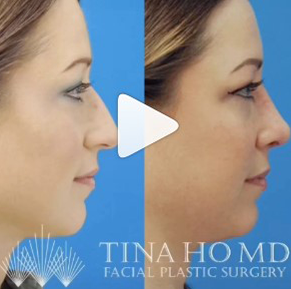Table of Contents
Book Now


Before & After
View Gallery
Rhinoplasty Before & After Videos
What Is Revision Rhinoplasty?

Revision rhinoplasty refers to rhinoplasty performed on a patient with history of prior rhinoplasty. A patient may be a candidate for revision rhinoplasty if they are seeking a corrective surgery to improve a new or persistent nasal deformity or breathing issue after fully healing from their previous surgery. Revision rhinoplasty is usually much more challenging compared to primary rhinoplasty given that the nasal anatomy is altered and there is scar tissue. Revision rhinoplasty patients, in fact, are at higher risk of requiring additional nasal procedures in the future. Dr. Ho is uniquely trained and experienced in revision rhinoplasty, drawing patients from various areas of Philadelphia and Wayne as well as from all over Pennsylvania, New Jersey, and New York. She is available for consultation with all patients with history of previous rhinoplasty and will devote thorough evaluation and discussion with each patient to determine whether they may be a candidate for revision rhinoplasty.
Educational Videos
What is Dr. Ho’s Approach to Revision Rhinoplasty?

As a double board-certified rhinoplasty specialist, Dr. Tina Ho possesses extensive training and experience in revision rhinoplasty. Revision rhinoplasty candidates often lack sufficient septal cartilage for cartilage grafting as it may have been used up in prior surgery. Dr. Ho has experience in harvesting and using a patient’s native ear and rib cartilage to compensate for this issue and achieves beautiful, natural results with ear and rib cartilage grafting. Furthermore, many patients seeking revision rhinoplasty suffer new or worsened nasal breathing issues from previous surgery. As a double board-certified facial plastic surgeon, Dr. Ho understands the importance of nose form and function and will develop a customized surgical plan for each revision rhinoplasty patient from both a cosmetic and functional rhinoplasty standpoint. For those revision rhinoplasty candidates with scarred or damaged skin, Dr. Ho incorporates nano fat and platelet-rich plasma (PRP) injections into her surgical approach to give her patients the best healing outcomes.

Patient Testimonial Videos
What are common nasal issues that can be addressed with revision rhinoplasty?
Common nasal issues that can be improved or corrected with revision rhinoplasty include but are not limited to:
- Nasal obstruction
- Nasal asymmetry or crooked nose
- Pollybeak deformity
- Inverted V deformity
- Scooped or saddle nose deformity
- Nasal bridge hump (Dorsal hump)
- Pinched or bulbous nasal tip
- Over Reduced nose
- Overly wide or thin nose
- Nasal valve collapse

THE SURGICAL PROCESS
At the start of revision rhinoplasty, anesthesia will be administered in order to make sure the patient does not experience any pain or discomfort. Incisions will be created, usually in the same location as the prior rhinoplasty incisions. This will depend on the desired degree of change.
Once the required changes have been made to the bone, cartilage, and/or soft tissue, incisions will be closed using sutures.
BEFORE & AFTER PHOTOS
WHAT IS RECOVERY LIKE?
Following revision rhinoplasty surgery, the patient will need to follow Dr. Ho’s personalized post-surgical care directions as closely as possible. This will ensure a shorter and more comfortable recovery process and the highest-quality results.
The healing process varies from patient to patient depending on the techniques that were used during the surgery. A degree of bruising and swelling will be present in and around the nose. These will fade more quickly if the patient keeps their head elevated and applies ice packs as directed.
Rest is vital to the healing process, and patients must stay home from work for a time and avoid strenuous activities. Follow-up appointments will allow Dr. Ho to check on the progress of the healing process.

HOW MUCH DOES REVISION RHINOPLASTY COST?
The cost of this corrective nasal procedure is dependent upon a variety of factors. The exact techniques utilized play a role in determining price, as do anesthesia fees, the amount of time needed to perform the surgery, and the specific issues being corrected. Average cost ranges from $15,000-$25,000 including facility and anesthesia fees, depends on amount of work and time needed.
What type of patient is an ideal candidate for Revision Rhinoplasty?

The ideal revision rhinoplasty patient is a healthy non-smoking patient without remarkable medical or surgical history and with new or persistent nasal deformities and/or breathing issues that can be improved surgery. The ideal candidate should be fully healed from their previous rhinoplasty (at least 6-12 months out from prior surgery) and demonstrate healthy nasal skin and realistic expectations regarding revision surgery goals and outcome. Moreover, they should be committed to long term follow-up with their revision rhinoplasty surgeon to ensure the best surgical results. Dr. Ho is a double board-certified revision rhinoplasty specialist in Philadelphia and Wayne and will thoroughly evaluate every candidate to determine whether they may benefit from revision rhinoplasty.
Book Now
Testimonials
Learn More During a Consultation
Book Now
Related Procedures
FAQ’s
Who is a candidate for revision rhinoplasty?
Men and women who are unhappy with the results of their previous rhinoplasty surgery are good candidates for a revision rhinoplasty in Philadelphia. Similar to any surgery, it is essential to be in good physical and mental health, as well as not be on any medications that could increase the risk of complications. Non-smokers or those willing to quit before and after the surgery are ideal for a revision procedure because of better healing rates.
The presence of correctable issues from the original surgery is important to ensure successful outcomes. Given the complex nature of a secondary rhinoplasty, patients must have realistic expectations about what can be achieved by the procedure.
What are the common reasons for needing revision rhinoplasty?
A rhinoplasty surgery can enhance the aesthetic appearance of the face and address issues to improve the airflow and functionality of the nasal passages. However, in some instances, a surgeon can undercorrect the original issues or leave a patient with undesirable outcomes. Fortunately, a corrective rhinoplasty can help address these issues to provide a more desirable result.
Common reasons people undergo a rhinoplasty revision surgery in Philadelphia include:
- Undesirable results
- A residual hump, asymmetry, or roundness of the nose
- Damage to a primary rhinoplasty from an accident or trauma
- Breathing issues caused or not corrected by a primary rhinoplasty
- Complications due to scar tissue
How long should I wait before considering revision rhinoplasty after my initial surgery?
After an initial rhinoplasty, swelling is present and can take up to six months to a year to fully resolve. It is important to wait until all the swelling has resolved for two reasons. The final outcome can not be fully appreciated while swelling is present. Also, the swelling is a sign the tissues are still healing, and waiting until all tissues are fully healed is essential for the healing of a secondary rhinoplasty.
Therefore, it is recommended that you wait at least a year after a primary rhinoplasty to consider a revision. Surgery places a huge physical and emotional toll on the body, and that year gives your body and mental health time to fully prepare for the impact of a second surgery and recovery period.
What are the risks associated with revision rhinoplasty?
While the complexity of a corrective rhinoplasty can vary significantly between patients, these procedures are more difficult than a primary rhinoplasty. The extra difficulty makes it extremely important to choose an experienced surgeon before proceeding with a revision.
While secondary rhinoplasties are generally considered safe, some surgical risks still remain. By choosing a highly qualified, board-certified rhinoplasty specialist, the incidence of complications and disappointing results can be greatly minimized. The risks of revision rhinoplasty include:
- Bleeding
- Infection
- Nasal blockage or a congested sensation
- Anesthetic complications (i.e. allergic reactions)
- Dissatisfaction with the outcome
How is revision rhinoplasty different from primary rhinoplasty?
Revision rhinoplasty differs from primary rhinoplasty mainly due to its greater complexity and difficulty in achieving exceptional results. Due to alterations to the natural framework of the nose during the primary procedure, secondary surgery is more complicated as it attempts to undo some of these changes.
In some cases, the nasal cartilage can be depleted from the previous surgery giving the plastic surgeon less cartilage to work with during the revision. If more cartilage is needed for the procedure, this will require the surgeon to use a cartilage graft from a donor site on the body, typically the rib.
The presence of scar tissue requires careful and precise manipulation to prevent damage to the structures of the nose. Because of these reasons, extensive knowledge and skills are required to achieve the desired results.
Can revision rhinoplasty correct functional issues as well as cosmetic concerns?
When planning a revision nose job in Philadelphia, identifying all the issues created by the original rhinoplasty is essential to obtaining improved cosmetic and functional outcomes.
Whether present before or as a result of the primary rhinoplasty, functional issues related to proper airflow through the nasal passages can be addressed during revision rhinoplasty. This can lead to an improved quality of life and a reduction in sinus issues. Although, the functional results are not noticeable immediately after surgery, as the swelling improves patients typically notice that they are able to breathe much more easily and comfortably.








